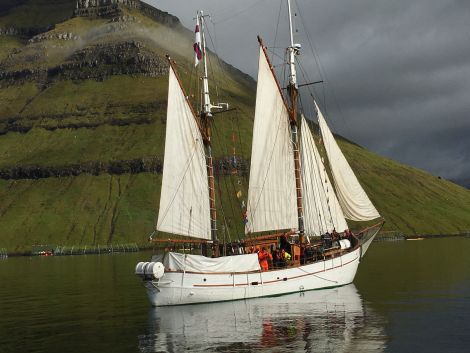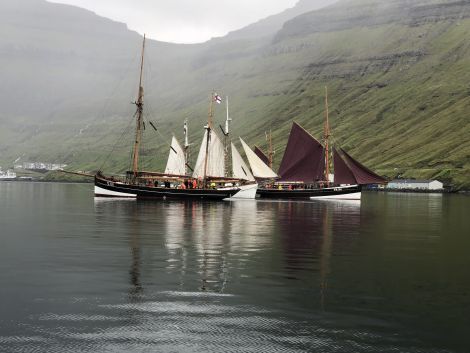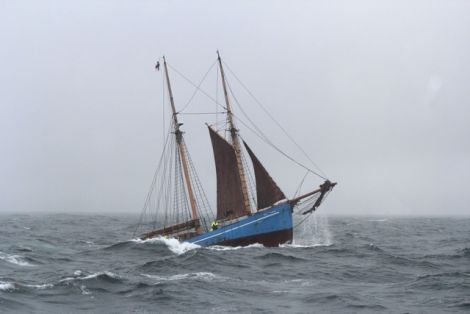Marine / Historic Faroese fleet to sail to Lerwick
SEVEN historic wooden boats from Faroe are set to visit Shetland in June.
The ships – two of which date back to 1884 – will stop off in Lerwick after visiting Denmark as part of celebrations marking the centenary of the Faroese flag.
The fleet aims to be in Lerwick on 13 and 14 June and the ships will be open to the public.
The visit comes courtesy of Faroese Association of Wooden Sailing Ships, or Felagið Føroysk Træseglskip.
“Our bonds with Shetland are long-standing and very close, not least through the many aspects we share in our maritime history and heritage,” the group said.
“While in Lerwick the ships are open to the public so people can visit the seven ships and speak with members of the crew about the ships and the old relationship between Shetland and Faroe Islands.”
The Faroese flag was designed in the Danish capital in 1919 by Faroese students and was presented to the public on 2 June 1919 in a park to the north of Copenhagen.
The 2019 Faroese Flag Flotilla will first visit Denmark, taking in the cities of Århus and Copenhagen, before stopping off in Lerwick on the way back to Faroe.
Five of the seven vessels due to visit Shetland have been deemed worthy of preservation by the National Museum of the Faroe Islands.
The Johanna TG 326 and the Westward Ho TN 54 were built in England in 1884.
They will be joined by the Dragin KG 212 built in Copenhagen in 1945, and the five years older Thorshavn.
Norðlýsið TN 24 built at the Torshavn shipyard in 1945 will also head out to sea.
Two motorised boats will feature in the fleet – the Heimdal VA 151 and the Norðan KG 334 designed and built by celebrated boat builder Lias í Rættará in Torshavn in 1919 and 1945 respectively.
Become a member of Shetland News
The daily maintenance and running of all the vessels is taken care of by a dedicated circle of “ship friends” who are interested in the preservation of this cultural heritage.
Johanna and Westward Ho are both ships known in Faroese as slupp – ‘smack’ in English – that were imported from England and Scotland from the late 1870s until the 1930s.
These vessels helped to transform the Faroe Islands from a farming to a fisheries-based society and also to a modern cash-based economy.
There were over 130 ‘smacks’ active in their heyday in the Faroe Islands, but today only Johanna and Westward Ho survive.
Become a member of Shetland News
Shetland News is asking its many readers to consider paying for membership to get additional features and services: -
- Remove non-local ads;
- Bookmark posts to read later;
- Exclusive curated weekly newsletter;
- Hide membership messages;
- Comments open for discussion.
If you appreciate what we do and feel strongly about impartial local journalism, then please become a member of Shetland News by either making a single payment, or setting up a monthly, quarterly or yearly subscription.





































































